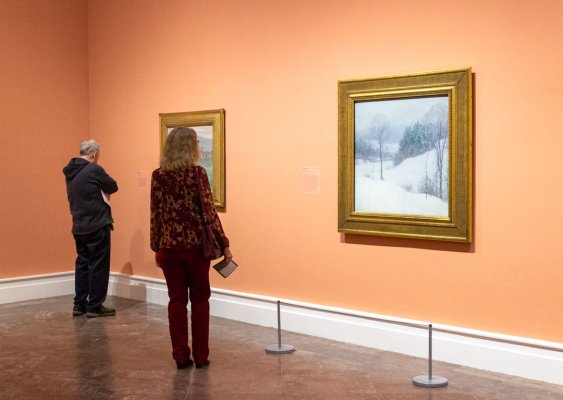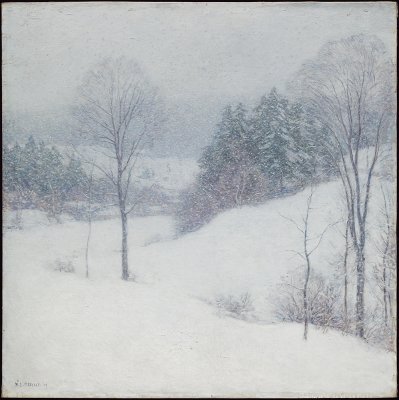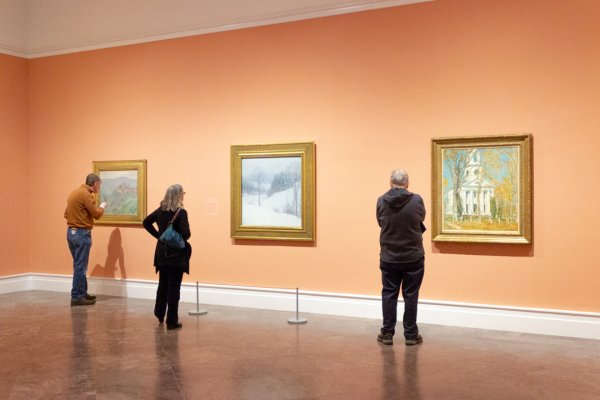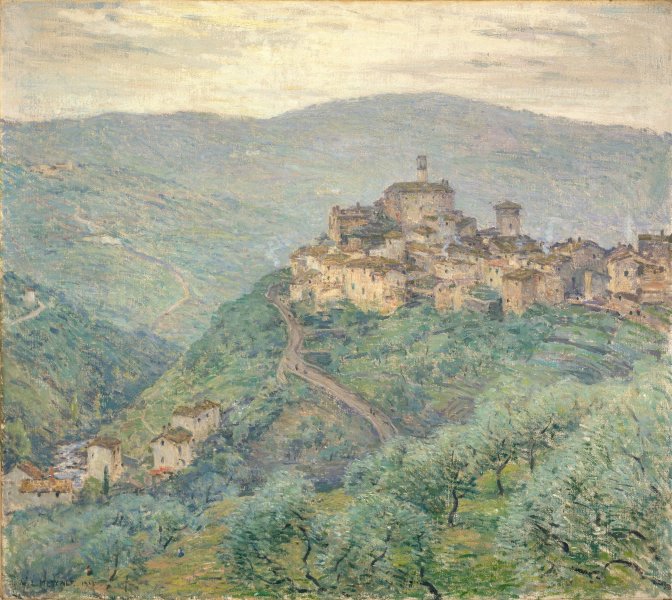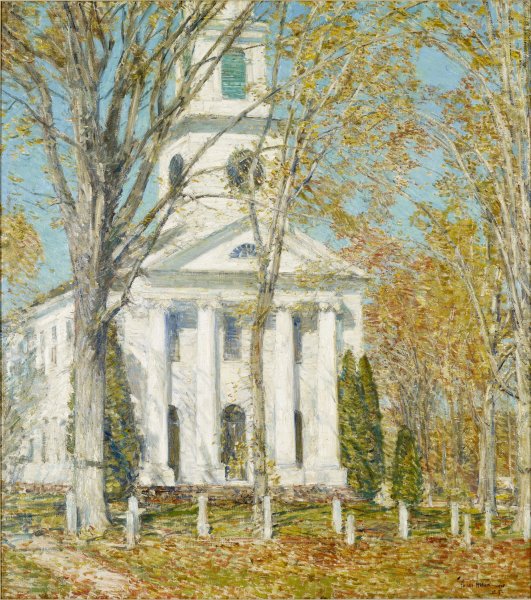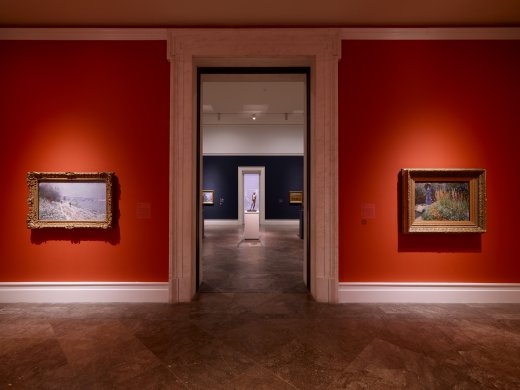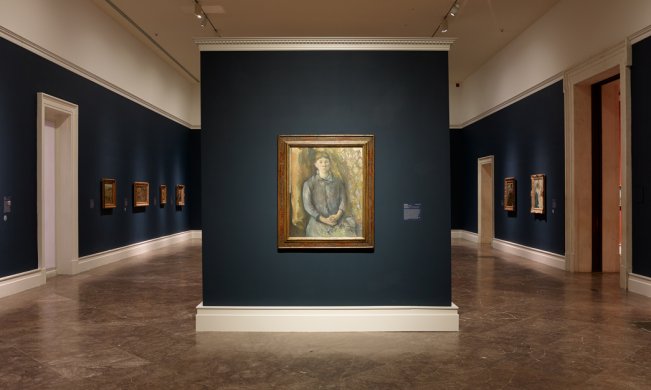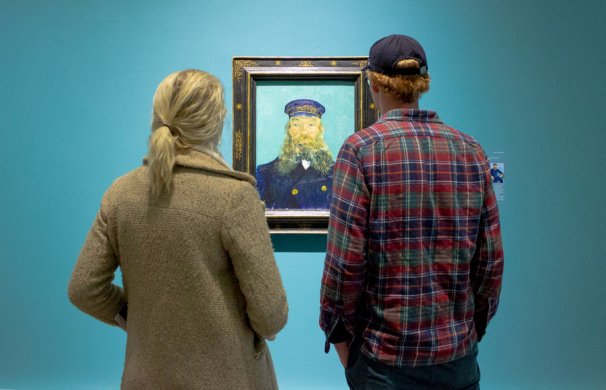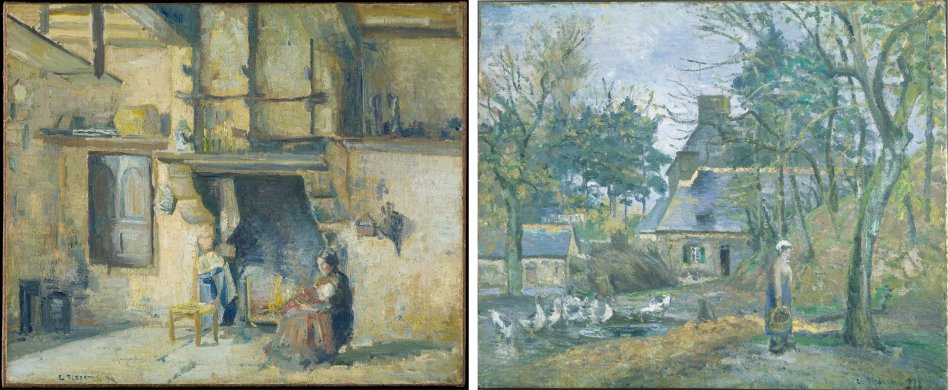The New England countryside—as seen through a film of flurries in The White Veil—was one of Willard Leroy Metcalf's favorite subjects. This atmospheric scene was inspired by the landscape around Cornish, New Hampshire, where Metcalf spent several winters beginning in 1909.
Around the turn of the twentieth century, the Impressionist movement found an appreciative audience among a younger generation of American painters, including Metcalf. A native New Englander, he initially made a name for himself as an accomplished magazine illustrator before moving to France in 1883 to pursue additional training in painting. During this time, he became a frequent visitor to Claude Monet’s home and studio at Giverny. When he returned to the United States in 1889, he banded together with other like-minded American artists as the exhibition society The Ten. Works by several other members of this group of American Impressionists, including Childe Hassam and John Twachtman, are also on view as part of Humble and Human: An Exhibition in Honor of Ralph C. Wilson, Jr. as well as much more summery scene by Metcalf, Pelago—Tuscany.
Humble and Human is on view through Sunday, May 26, 2019.
